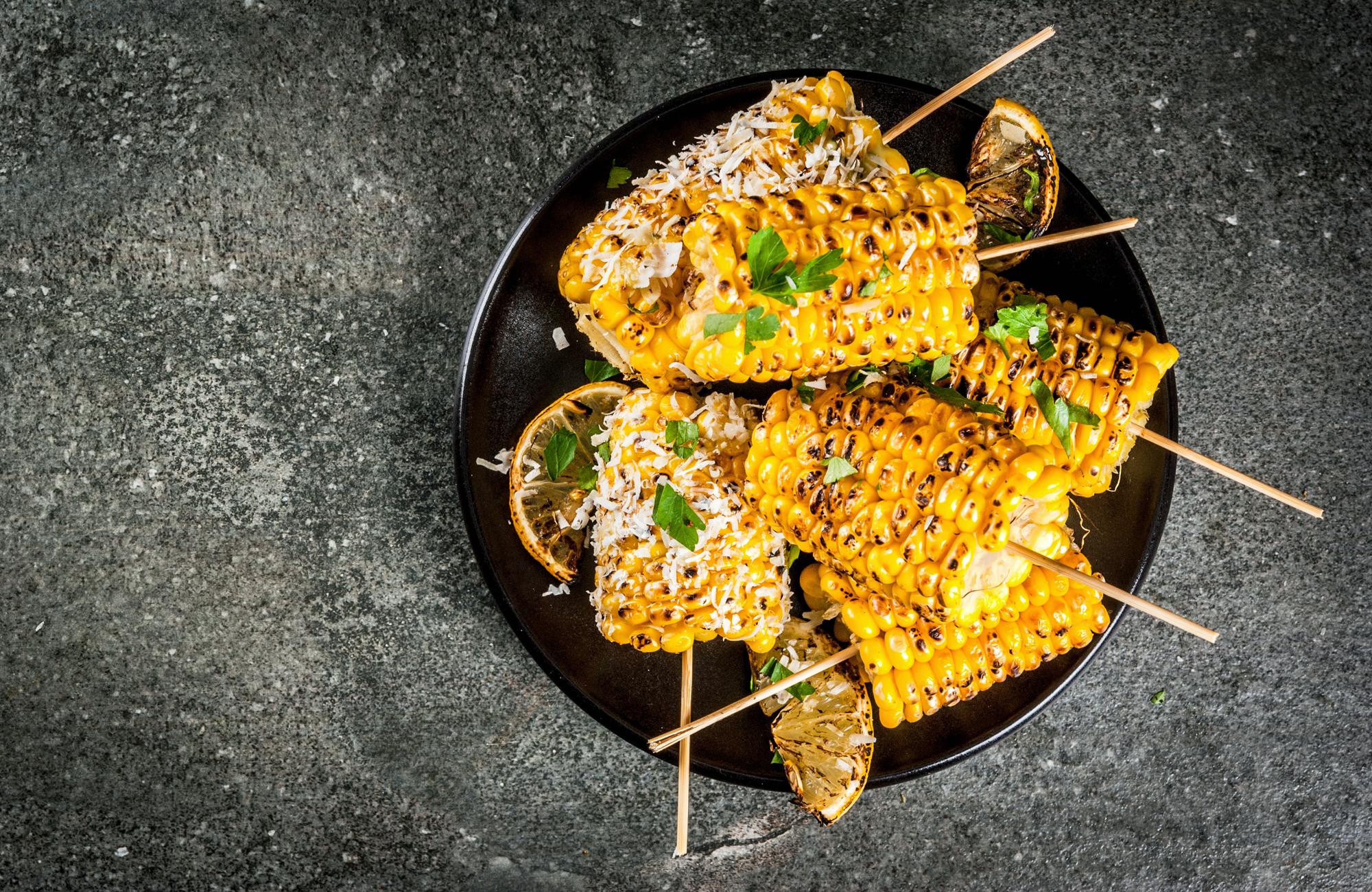Don’t miss out on these cheesy dishes on your next trip to this culinary capital.
The country may be famous for potatoes and chocolate, but the one ingredient Ecuadorians won’t go without is cheese. They eat it for breakfast, lunch, and dinner, and they even drink it in between meals as the secret ingredient for the perfect Ecuadorian hot chocolate because, as the local saying goes, “chocolate sin queso es como amor sin beso” (“chocolate without cheese is like love without a kiss”). Don’t miss out on these cheesy dishes on your next trip to this culinary capital.
Top Picks for You
Chocolate Caliente
WHERE: Casa Gangotena
Ecuadorians take their hot chocolate seriously, dedicating a special vessel called a chocolatera for making their dark and decadent cups of cocoa. Which is why many visitors are seriously shocked when they find that the white, fluffy pillows floating to the surface aren’t the all-too-traditional marshmallows they’re used to seeing, but rather, chunks of fresh cheese. The tradition of chocolate con queso has become so ingrained in the culture that many cafes will serve a side of fresh farmers cheese or mozzarella with any order of hot chocolate. The most traditional way to drink it is to let the cheese settle at the bottom of the mug to deliver a punch of salty sweetness with each sip, leaving a cheesy, melted surprise at the bottom to eat up with a spoon once you’re finished.
Emborrajados
WHERE: Mercado Central or Restaurante Vicentes
Emborrajados are the Ecuadorian equivalent of a grilled cheese sandwich, only in this version, thick slices of fresh cheese get sandwiched between two halves of a ripened, flattened plantain. The sandwich is then dipped in batter often made with flour, eggs, and more cheese, and is then served piping hot at street vendor locations from the early morning until the evening. Find them at restaurants unflattened and unbattered under the name “madurito con queso.”
Recommended Fodor’s Video
Empanadas de Morocho
WHERE: Empanadas de Morocho de la Ulloa
Like most South American cities, empanadas abound in Quito. Try the local variation of a traditional empanada made with a thin white corn shell and stuffed full of fresh cheese, meat, and rice. Alicia Quinteros has been making these local favorites since 1985 at her spot in La Gasca, but don’t expect a healthier or less filling version here, as Quinteros is famous for making the biggest empanadas in Quito.
Empanadas de Viento
WHERE: Café de la Vaca
These fluffy and flaky empanadas take on an airlike quality from the copious amounts of butter used to make the dough (viento translates to “air” or “wind”). Eat them for breakfast, lunch, or dinner while in Quito, as their savory/sweet flavor combination is delicious all day long. The pockets of dough are filled with small bits of fresh cheese and then fried until golden brown before getting an ample dusting of sugar.
Empanadas de Verde
WHERE: Empanadium
Although this style of empanada originated on the coast of Ecuador, Quiteños have fallen hard for this little gluten-free hand pie and put their own spin on it. The dough is still made from green plantains (verde means green), but instead of a filling of shrimp or picadillo, these empanadas are stuffed full (and we mean full) of melted cheese and baked until golden brown.
Tigrillo
WHERE: Parame Bolon
At first glance, a traditional plate of tigrillo may look like an American-sized portion of scrambled eggs. Although eggs play a part in this breakfast dish, the main ingredients are plantains and cheese. One mashed plantain is all it takes to get the starchy texture in place, and then the egg and cheese get added to give the dish a cheesy, salty finish.
Humitas
WHERE: Restaurante de Mama Clorinda
Don’t make the mistake of calling these corn husked cakes tamales in front of a Quiteño. The difference is that humitas are made with fresh corn (not dried) and filled with a mixture of fresh cheese, diced onions, eggs, and cream before getting wrapped and steamed in a corn husk. Grab one from a vendor at Mercado Central for an amazing breakfast on the go or head to Restaurante de Mama Clorinda to enjoy one with a hot cup of chocolate caliente.
Locro de Papa
WHERE: Café de la Vaca
The secret of this staple is that the main ingredient doesn’t even make it in the name. Sure it’s loaded with pureed potatoes to give it a creamy texture, but it’s the cheese that makes this soup so decadent. Think of it as a broccoli cheddar soup without the broccoli … and more cheese.
Llapingachos
WHERE: Restaurant Achiote
Llapingachos are typically served as a side dish for breakfast or brunch but can be found at markets and street carts throughout the day. They are similar to a hash brown, except these fried patties of seasoned, grated potato are filled with a fresh cheese that oozes out of its crispy shell at the touch of a fork.
Carne en Palito
WHERE: Juan’s Traveling Grill (usually off Matovelle Street, one block behind the Mejia School)
Carne en palito translates quite literally to “meat on a stick,” and there’s no shortage of street meat around Quito during festival season. Few Quitenos would be caught with a stick of un-sauced skewered meat in their hands, so most vendors have an arsenal of sauces behind their grills. Ask for a healthy drizzly of the traditional Ecuadorian style queso sauce to eat your street meat like a local.
Bolones de Verde
WHERE: Restaurant Achiote
You’ll see this traditional dish of green plantain cheese balls listed under many names at restaurants around Quito, including bolas verde con queso, bolon de verde, fried plantain dumplings, etc. It’s one of the most typical dishes around, and, although every chef’s interpretation may vary (sizes range from golf ball sized to baseball sized, and fillings can include just cheese or a mixture of cheeses with meat and/or vegetables), it’s hard to find a sub-par version in the city.
Dulce de Higos
WHERE: Cafeteria Fabiolita
A preserved fig carmelized in a brown sugar and cinnamon syrup sits atop a thick slice of queso fresco for this simple yet delicious dessert. A drizzle of honey is optional.
Choclos Asados
WHERE: Mercado Central
The smell of grilled corn on the cob fills the streets of Quito, but this isn’t your average street corn. Ecuadorian kernels are notoriously larger than northern varieties and are often white and less sweet, making them the perfect base for the sauce-like salsa de cilantro y queso many street vendors douse on top of this street food. The sauce is green, creamy, and cheesy, and many vendors will add a sprinkle of fresh queso fresco crumbles to “sweeten” the deal.
Muchines de Yuca
WHERE: La Tortilla Restaurante
This traditional appetizer is similar to a croquette or a mozzarella stick, only it’s made with the root of a cassava plant called yuca. The yuca is mashed with spices and butter then formed around a thick cylinder of cheese (mozzarella or a farmer’s cheese) and fried in a pan until golden brown. They’re often served with a tomato relish or an aji (pepper) sauce.
Patacones con Queso
WHERE: Jocay Marisqueria
Patacones basically replace French fries in many Ecuadorian restaurants (a burger and fries become a burger and patacones), but Quitenos took these simple fried green plantains up a notch by topping piping hot patacones with fresh slices of farmer’s cheese, turning them into a nacho-style meal in themselves.





